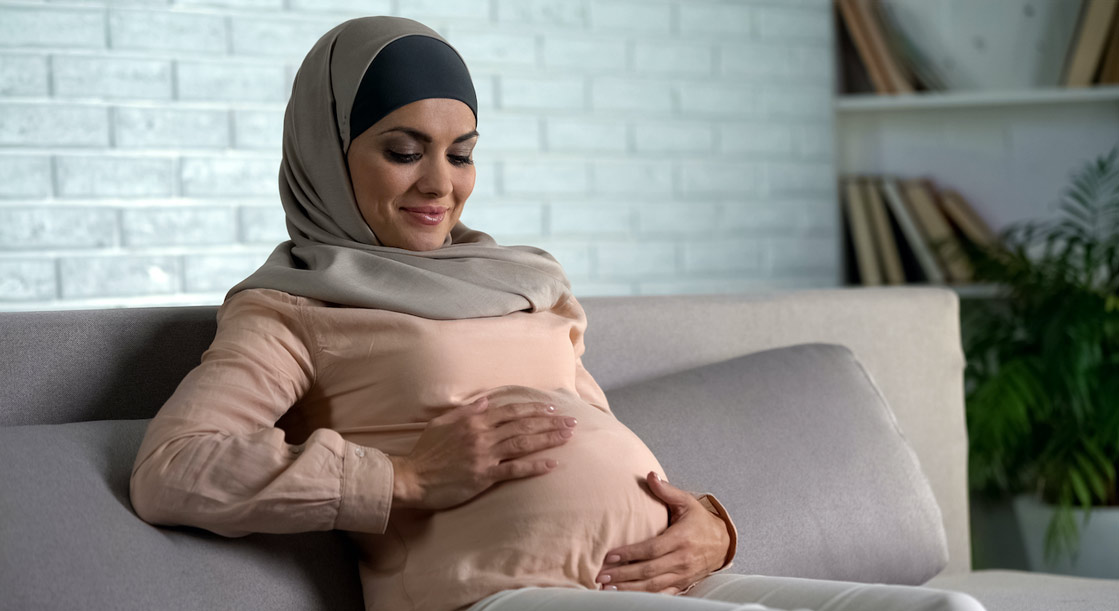IVF is one of the most successful fertility treatments, with more than 8 million babies born from IVF treatment in the last 40 years. But it’s a big decision – not only is it costly but it’s also strenuous physically and mentally. Many couples feel a lot of pressure when choosing a fertility clinic, and that’s understandable – there’s a lot to consider – but there is there too much emphasis placed on the importance of IVF success rates?
The clinic with the highest success rate must have the best results, right? Well, no, not really.
Renowned fertility consultant and Co-Director of The Fertility & Gynaecology Academy, Dr Amin Gorgy comments: “It’s very common for couples and individuals comparing fertility clinics to focus on the success rates. In many cases, figures make comparison easier, but that’s not always the case when looking at IVF success rates. Patients should certainly factor IVF success rates into their wider considerations, but it’s not quite as simple as just choosing the clinic with the highest success rate.
“Success rates can sometimes be misleading: there are many factors that can influence them, and they are presented differently from clinic to clinic. And so it’s essential to understand IVF success rates when making any kind of comparison.”
Dr Gorgy explains: “IVF success rates, when compared with The Human Fertilisation & Embryology Authority (HFEA) national average, will give you a broad overview of how successful IVF treatment is at any particular clinic. However, a clinic’s success rate won’t be able to tell you anything about your own chances of successful IVF. That can only be worked out by a fertility consultant once they have spoken with you, analysed your medical history and run any tests they feel necessary.”
Some couples and individuals are tempted by high success rates and low costs, and consider going abroad for fertility treatment, but the reality of this is that but there are dangers which include differing standards and a higher risk of multiple birth which can be dangerous for the mother.
How IVF success rates can differ
As mentioned above, it’s difficult to compare clinic success rates fairly because many different factors can considerably influence the figures between clinics. These include (but are not limited to):
- Size of the clinic
- The reason for patients’ infertility
- Number of patients being treated
- Age of the patients being treated
- Genetic factors
- Lifestyle factors
- Fertility history
- Quality of egg and sperm
- Laboratory processes
- History of previous unsuccessful IVF treatment
- History of miscarriage, particularly if more than one
Some clinics treat certain types of patients or conditions, for example, older patients. We know that women have a finite number of eggs that decline in both number and quality more rapidly after the age of 35, and that this decline in reproductive capacity is not reversible, making it more difficult to conceive and carry a baby to term. Therefore, a clinic which specialises in treating older patients may have a lower success rate due to the nature of their patients, making it difficult to compare success rates against other clinics that may treat younger patients.
Interpreting IVF success rates
The Human Fertilisation & Embryology Authority (HFEA) is the government’s independent regulator for fertility treatment and research. It’s website is independent, impartial, and shows the latest recorded and validated data for all registered clinics. Before choosing a fertility clinic, you should ensure they are registered with the HFEA for peace of mind.
The HFEA Fertility Trends Report is really useful reading and provides detailed information about the most recent fertility statistics – we would recommend anyone considering IVF or fertility treatment reviews this.
As explained, interpreting success rates when comparing figures and clinics isn’t as easy – or perhaps as important – as many think. What is important is checking your chosen clinic’s success rate is in line with the national average for birth rates, according the HFEA. Here at The Fertility & Gynaecology Academy our success rates are in line with national average.
HFEA states that the following are the average chance of a birth from IVF depending on a woman’s age (from couples using their own eggs and partner’s sperm)
Under 35: 29%
35-37: 23%
38-39: 15%
40-42: 9%
43-44: 3%
Over 44: 2%
(Taken from HFEA website, January 2019)
This brings us on to our next point. It’s important to look at exactly which success rates clinics are reporting: The pregnancy rate or the live birth rate? Success per embryo transfer or per patient? This will make a difference to the meaning of the success rates.
The pregnancy rate is defined as a clinical pregnancy (ongoing at 20 weeks) whereas live birth rate is the delivery of the baby. Pregnancy rates do not show the full picture, as unfortunately not all pregnancies end in a live birth. Live birth rates are a more accurate measure of the IVF success. The HFEA calculates live birth rates (see table above) by dividing the number of live births in a given year, by the number of embryo transfer procedures in the same year. This is multiplied by 100 to give a percentage.
The only way to get a good idea of your own potential IVF success rate at a clinic is to have an initial consultation where the consultant will take into account all factors individual to you and your situation. We understand that booking an initial consultation at a fertility clinic is a big step and so we run regular open days to give you a chance to visit the clinic, have a tour of the facilities, and meet Dr Gorgy. You will also have the opportunity to meet the team and ask any questions you may have. We’re a small clinic and spaces book up fast so if you’d like to find out more or reserve your place for our next free fertility open day, register here.
Our IVF success rates
At The Fertility & Gynaecology Academy our commitment to compassionate care and the highest levels of excellence are reflected in our HFEA ratings. Our clinic has a 4/5 patient rating (based on 33 patients) and a 5/5 inspection rating (January 2019).
We have a state of the art laboratory which has the very latest equipment and technology to ensure the very highest standards are met.
We always encourage potential patients to consider more than just success rates when choosing a clinic. That being said, we are of course very proud that our own success rate is in line with the HFEA national average, despite specialising in complex, difficult to treat cases. Here you will find our latest success rates.
| Age | Clinical Pregnancy Rates / ET | Live birth rates / ET |
| Up to 35 | 25/46 54% | 21/46 46% |
| 36-39 | 15/26 58% | 13/26 50% |
| 40-47 | 7/36 20% | 5/36 14% |
| All ages | 47/108 44% | 39/108 36% |
| Ovum donation | 60% | 60% |
| Note: These figures are for the year 2016. | ||
Dr Gorgy adds: “There’s more to fertility clinics than just IVF success rates and considering only these is not a useful way of comparing clinics. By all means, take them into consideration, but as part of the bigger picture – consider what other elements of care are important to you. Having a female doctor? The clinic opening hours? Cost? Waiting times? Eligibility requirements? Treatment add-ons? Location? It’s about finding out what your chances of getting pregnant are, and finding the best clinic for you.”
To speak to a member of our administration team or to book a consultation with Dr Gorgy, please call the clinic on 020 7224 1880.







